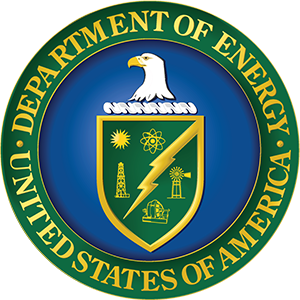In order for federal agencies to gain the greatest lifetime benefit from a solar photovoltaic (PV) system, several key steps and considerations need to be incorporated during the screening, acquisition, construction and commissioning phases that will lead to optimal performance throughout the life of the system, including planning for severe weather and other considerations that affect the O&M for the system (e.g., stormwater management, row spacing). It has been observed that the root causes with performance and safety issues can often be traced back to decisions made during early planning. Learning to build high performing, safe and reliable solar PV systems as well as planning for O&M and decommissioning are critical areas of knowledge for management within federal agencies.
This training will cover key topics such as, site screening for techno-economic viability, project validation, procurement specifications, request for proposal (RFP) considerations, construction and project commissioning.This training is part of a sequential series. The recommended order of completion is:
- Planning, Procuring and Managing Solar PV Systems for Long-term Performance: Planning a New Solar PV Acquisition - Key Steps & Considerations to Safety, Longevity, and Performance;
- Planning, Procuring, and Managing Solar PV Systems for Long-term Performance: Operations & Maintenance;
- Planning, Procuring, and Managing Solar PV Systems for Long-term Performance: Preventing & Recovering from Damage; and
- Planning, Procuring, and Managing Solar PV Systems for Long-term Performance: End of Performance Period.
Instructors
Andy Walker, Principal Engineer, NREL Read Bio
Andy Walker is a principal engineer at the National Renewable Energy Laboratory, where he conducts engineering and economic analysis of energy efficiency and renewable energy projects for federal agencies and commercial and industrial clients. Since 2009, he has been focusing on performance issues and helping system owners evaluate and optimize system performance. He is currently managing a U.S. Department of Energy SunShot program on photovoltaic (PV) operations and maintenance (O&M), producing a best practices guide and PV O&M cost model. He holds a patent on the Renewable Energy Optimization (REO) method of planning renewable energy projects across a portfolio of properties based on economic value, which was awarded the Thomas A. Edison patent award for innovation and impact. He has taught energy classes at the University of Colorado at Boulder, Colorado School of Mines, and at the Metropolitan State University of Denver. He is a Fellow of the American Society of Mechanical Engineers and led the Solar Energy Division and is the author of more than 28 book chapters, journal articles, and conference papers including "Solar Energy: Technologies and Project Delivery for Buildings," a reference book published by John Wiley. Andy's credentials include a B.S., M.S., and Ph.D. in mechanical engineering, and he is a registered Professional Engineer in the State of Colorado.
Kevin Watson, Research Associate, Lawrence Berkeley National Laboratory Read Bio
Kevin Watson has worked at Berkeley Lab since 2018. He supports federal agencies by providing technical and procurement guidance for the adoption of distributed energy resources. He also works on issues related to solar photovoltaic durability during severe storm events. Prior to joining the lab, Kevin worked as a solar photovoltaic system installer and site assessor in New York and Arizona. Kevin has a Bachelor of Science in sustainable energy management from the SUNY College of Environmental Science and Forestry.
Gerald Robinson, Program Manager, Lawrence Berkeley National Laboratory Read Bio
As a program manager and principal investigator at Lawrence Berkeley National Laboratory (LBNL), Energy Technology Area (LBNL-ETA), Gerald largely works to address procurement barriers related to the adaption of resilient energy technologies. Related to this effort, Gerald is part of a team of researchers investigating solar photovoltaic (PV) hardware resiliency and severe weather topics. Gerald supports the U.S. Department of Energy's Federal Energy Management Program (FEMP) resilient energy programs that provide procurement and technical assistance to federal agencies. As part of his role in supporting FEMP, Gerald leads teams developing resilient energy programs and procurements designed to simultaneously reduce utility costs to the taxpayer while increasing the reliability of power supplies feeding federal facilities. Gerald also works on a FEMP team working to develop solar PV operations best practices for federal agencies and produced a solar PV operations and maintenance solicitation template and a guide to spotting and repairing existing vulnerabilities. Gerald has been working in commercial and institutional energy management since 1992.
Learning Objectives
Upon completion of this training, attendees will be able to:
- Identify the critical steps are to acquiring a high performing and safe on-site solar PV system;
- Recognize how decisions made today could affect long-term operations and maintenance, performance, safety and longevity;
- Analyze how to pre-plan a system so that it can accommodate changing future needs for such things as resiliency and microgrids, EV chargers and site development considerations; and
- Plan for O&M and end-of-performance period; and Incorporate considerations for severe weather hardening where needed.










